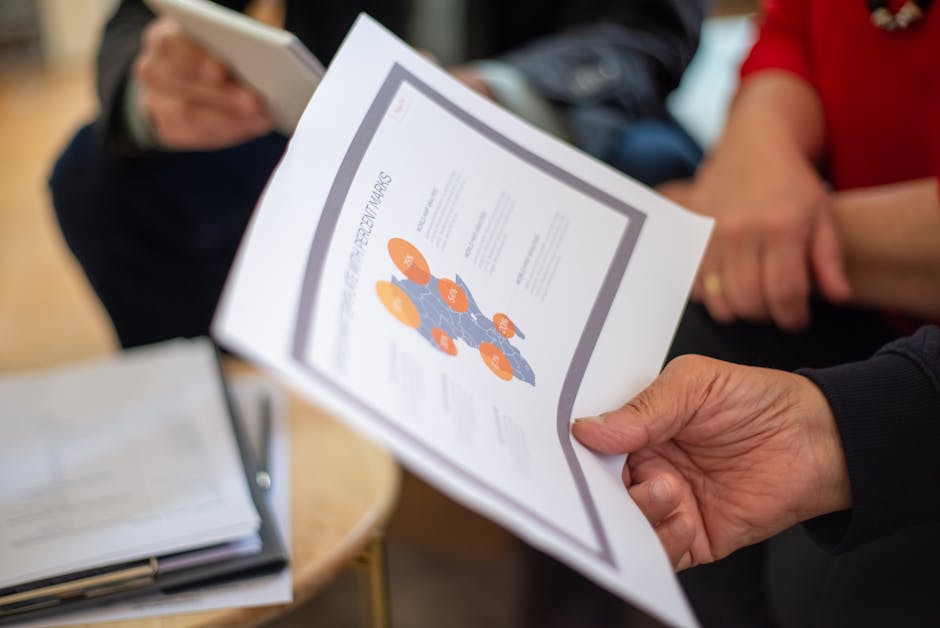Examining South Africa's Journey to Third Place: Analyzing Their Performance Against DR Congo
Background: South Africa's Performance in the Tournament
 |
| Examining South Africa's Journey to Third Place: Analyzing Their Performance Against DR Congo |
Throughout the tournament, South Africa showcased resilience and determination, battling it out against tough opponents and proving themselves as a formidable team. They started their campaign with a draw against Ivory Coast, followed by a narrow loss to Egypt. However, they bounced back with a convincing win against Namibia and a hard-fought draw against Morocco, which secured their place in the knockout stages.
In the Round of 16, South Africa faced a tough test against the highly fancied Egypt. Despite being the underdogs, they delivered a stunning upset, defeating the hosts 1-0 and advancing to the quarter-finals. Unfortunately, their journey came to an end in the semi-finals with a heartbreaking loss to Nigeria.
As South Africa prepares to face DR Congo in the third-place match, they will be looking to end the tournament on a high note and secure a podium finish. It is an opportunity for them to showcase their abilities and leave a lasting impression on the tournament.
South Africa's journey in the tournament
 |
| Examining South Africa's Journey to Third Place: Analyzing Their Performance Against DR Congo |
In the Round of 16, you faced a tough test against the highly fancied Egypt. Despite being the underdogs, you delivered a stunning upset, defeating the hosts 1-0 and advancing to the quarter-finals. It was a moment that showcased your ability to rise to the occasion and perform under pressure.
Unfortunately, your journey came to an end in the semi-finals with a heartbreaking loss to Nigeria. It was a hard-fought match, and your team gave it their all, but ultimately fell short of reaching the final.
Regardless of not making it to the final, your performances throughout the tournament have been commendable. You displayed strong team spirit and resilience, often punching above your weight against more fancied opponents. Your journey to the third-place match against DR Congo is a testament to your determination and fighting spirit.
As you prepare to face DR Congo in the third-place match, you have the opportunity to end the tournament on a high note and secure a podium finish. It is a chance for you to showcase your abilities and leave a lasting impression on the tournament.
South Africa's road to the third-place match

South Africa's road to the third-place match was a challenging and hard-fought journey. After a strong performance in the group stage, South Africa advanced to the knockout rounds, where they faced tough opponents and showcased their determination and resilience.
In the Round of 16, South Africa faced the highly fancied Egypt, who were the hosts of the tournament. Despite being considered underdogs, South Africa delivered a stunning upset, defeating Egypt 1-0 and securing a spot in the quarter-finals. This victory was a testament to their ability to rise to the occasion and perform under pressure.
In the quarter-finals, South Africa faced a tough test against Nigeria. While they fought hard, South Africa ultimately fell short, losing 2-1 and missing out on a place in the final. However, their performance in this match showcased their tenacity and strong team spirit.
Now, South Africa finds themselves in the third-place match against DR Congo. This is a crucial match for both teams, as they have the opportunity to end the tournament on a high note and secure a podium finish. South Africa will need to draw on their previous performances and demonstrate their fighting spirit once again to overcome DR Congo and claim the third-place position.
With their journey in the tournament coming to an end, South Africa can be proud of their performances and the progress they have made. While they may not have reached the final, their fighting spirit and determination have left a lasting impression. The third-place match against DR Congo provides a final chance to showcase their abilities and leave their mark on the tournament.
Match Overview: South Africa vs. DR Congo

The match between South Africa and DR Congo was a highly anticipated encounter in the third-place match of the tournament. Both teams entered the game with the goal of ending their campaign on a high note and securing a podium finish.
The match started off with a fast-paced and intense tempo as both teams looked to assert their dominance early on. South Africa showcased their disciplined defensive strategy, maintaining a compact backline and limiting the attacking opportunities for DR Congo. Their strong defensive organization and timely tackles kept DR Congo's forwards at bay.
In terms of attacking play, South Africa displayed their dynamic and creative style. They utilized quick and incisive passing to break through the DR Congo defense and create scoring chances. The attacking trio of South Africa constantly put pressure on the DR Congo defense with their speed and agility, forcing them into committing errors.
As the match progressed, both teams had their fair share of opportunities, with South Africa demonstrating their clinical finishing in front of goal. Their offensive approach paid off as they capitalized on their chances, scoring crucial goals to gain a lead.
The game ended with South Africa securing a well-deserved victory over DR Congo, clinching third place in the tournament. The match showcased South Africa's resilience, discipline, and tactical acumen, as they navigated their way past a formidable opponent.
The victory in the third-place match is a testament to South Africa's growth and development throughout the tournament. It provides them with a positive boost, setting the stage for future success in international competitions. Overall, South Africa can be proud of their performance against DR Congo and their journey in the tournament.
Key details and highlights of the match

The match between South Africa and DR Congo was a thrilling encounter that showcased the true spirit of competition. Both teams displayed their skills and determination as they battled it out for third place in the tournament. Here are the key details and highlights of the match:
- Intense Tempo: The match started off with a high-paced and intense tempo, with both teams showing their eagerness to dominate. The energy on the field was palpable, as players from both sides gave their all.
- Disciplined Defense: South Africa's defensive strategy proved to be effective as they maintained a compact backline and limited DR Congo's attacking opportunities. Their strong defensive organization and timely tackles kept DR Congo's forwards at bay.
- Creative Attacking Play: South Africa showcased their dynamic and creative style of play in the match. Their quick and incisive passing broke through the DR Congo defense and created scoring chances. The attacking trio of South Africa constantly put pressure on the DR Congo defense, forcing them into committing errors.
- Clinical Finishing: South Africa's offensive approach paid off as they capitalized on their scoring chances. Their clinical finishing in front of goal was evident throughout the match, helping them secure a lead.
- Well-deserved Victory: The game ended with South Africa clinching a well-deserved victory over DR Congo, securing third place in the tournament. Their resilience, discipline, and tactical acumen were instrumental in navigating past a formidable opponent.
Overall, the match was filled with excitement and showcased South Africa's prowess on both ends of the field. Their performance against DR Congo was exceptional and a testament to their growth throughout the tournament.
Tactical analysis and team formations

In the match between South Africa and DR Congo, both teams displayed strategic team formations and tactical decisions that shaped the outcome of the game.
South Africa adopted a disciplined defensive strategy, utilizing a backline of four defenders and two holding midfielders. This compact defensive setup allowed them to maintain a strong defensive shape, making it difficult for DR Congo to penetrate their defense. Their organized defensive structure enabled them to successfully neutralize DR Congo's attacking threats and limit their scoring opportunities.
On the offensive front, South Africa employed a dynamic attacking approach. They used their fullbacks to provide width and create overlapping runs, while their midfielders controlled the tempo of the match with their precise passing. They constantly looked to exploit spaces and create scoring chances through their quick and incisive link-up play.
DR Congo, on the other hand, opted for a more direct approach in their attacking play. They relied on the strength and physicality of their forwards to challenge South Africa's defense. Their midfielders played a crucial role in providing support and delivering long balls into the attacking third.
In terms of team formations, South Africa predominantly lined up in a 4-2-3-1 formation, with a strong emphasis on defensive stability and quick transitions. DR Congo, on the other hand, favored a 4-3-3 formation, focusing on a more attacking-oriented game plan.
Overall, South Africa's disciplined defensive strategy and dynamic attacking approach proved to be instrumental in securing their victory over DR Congo. Their ability to effectively execute their tactical plans was key in shaping the outcome of the match.
South Africa's Defensive Strategy

Against DR Congo, South Africa showcased a disciplined and well-executed defensive strategy that played a pivotal role in their success. They employed a compact defensive structure, utilizing a backline of four defenders and two holding midfielders. This formation allowed them to maintain a strong defensive shape and make it difficult for DR Congo to penetrate their defense.
South Africa's defensive tactics focused on maintaining organization and denying space to their opponents. They effectively closed down passing lanes and pressed the DR Congo players to disrupt their attacking rhythm. Their compact defensive structure prevented DR Congo from finding gaps in the defense and limited their scoring opportunities.
Individual performances in defense were also noteworthy, with South Africa's defenders showcasing their strength and intercepting passes. Their ability to win aerial duels and make crucial tackles disrupted DR Congo's attacking flow and prevented them from creating clear-cut chances.
Furthermore, South Africa's midfielders played a crucial role in their defensive strategy. The two holding midfielders provided additional support to the defense, effectively screening and breaking up DR Congo's attacks. They were also responsible for quickly transitioning the ball to the attack, initiating counter-attacks whenever possible.
Overall, South Africa's defensive strategy was characterized by discipline, organization, and effective individual performances. Their ability to neutralize the attacking threats of DR Congo and limit their scoring opportunities was instrumental in securing their victory. This defensive solidity showcased South Africa's tactical awareness and ability to execute their game plan, reflecting their preparedness and determination to succeed.
Defensive tactics and organization

South Africa showcased a disciplined and well-executed defensive strategy against DR Congo. Their defensive tactics focused on maintaining organization and denying space to their opponents. The team employed a compact defensive structure, utilizing a backline of four defenders and two holding midfielders. This formation allowed them to maintain a strong defensive shape and make it difficult for DR Congo to penetrate their defense.
South Africa's defensive approach was characterized by their ability to close down passing lanes and press the DR Congo players effectively. By doing so, they disrupted their opponent's attacking rhythm and limited their scoring opportunities. The team's compact defensive structure prevented DR Congo from finding gaps in the defense and made it challenging for them to create clear-cut chances.
Furthermore, individual performances in defense were also noteworthy. South Africa's defenders showcased their strength in intercepting passes and winning aerial duels. Their ability to make crucial tackles disrupted DR Congo's attacking flow and prevented them from creating dangerous opportunities.
In addition to the defensive line, South Africa's midfielders played a crucial role in their defensive strategy. The two holding midfielders provided additional support to the defense by screening and breaking up DR Congo's attacks. They were also responsible for quickly transitioning the ball to the attack, initiating counter-attacks whenever possible.
Overall, South Africa's defensive tactics and organization played a pivotal role in their victory against DR Congo. Their disciplined approach, effective pressing, and strong individual performances in defense limited DR Congo's scoring opportunities and neutralized their attacking threats. This defensive solidity showcased South Africa's tactical awareness and ability to execute their game plan effectively.
Individual defensive performances

South Africa's victory against DR Congo was also attributed to the outstanding individual defensive performances by their players. The defenders showcased their exceptional skills in intercepting passes and winning aerial duels, effectively disrupting DR Congo's attacking flow. They made crucial tackles, preventing their opponents from creating dangerous opportunities.
The central defenders played a vital role in maintaining the defensive structure. They were disciplined in their positioning and were quick to close down any potential threats. Their ability to read the game and anticipate the opponent's movements allowed them to make timely interceptions and clearances, thwarting DR Congo's attacking plays.
The full-backs displayed excellent defensive awareness and were reliable in both marking their opponents and providing cover for their teammates. They were diligent in tracking back and nullifying the threat posed by the DR Congo wingers. Their speed and agility allowed them to recover quickly and thwart any potential counter-attacks.
The holding midfielders were instrumental in screening and breaking up DR Congo's attacks. They applied relentless pressure on the opponents, forcing them into making errors and turnovers. Their positioning and tactical discipline prevented the opposition from finding gaps and penetrating the defensive line.
Overall, South Africa's individual defensive performances were exceptional. The players demonstrated their composure, resilience, and ability to effectively execute the team's defensive strategy. Their contributions played a significant role in limiting DR Congo's scoring opportunities and neutralizing their attacking threats.
South Africa's Offensive Approach

South Africa's offensive approach against DR Congo was characterized by their structured buildup play and quick transition into attacking positions. They displayed a combination of possession-based football and swift counter-attacks, constantly putting pressure on the opposition's defense.
One key aspect of South Africa's offensive strategy was their emphasis on maintaining possession and patiently building attacks from the back. The defenders and midfielders were confident in their passing abilities, often circulating the ball and looking for openings to exploit. This allowed the team to dictate the tempo of the match and control the flow of play.
In the final third, South Africa showcased their ability to quickly transition from defense to attack. Their deep-lying midfielders were effective in winning back possession and initiating rapid counter-attacks. Their direct and incisive passing, combined with the pace and agility of their wingers, posed a constant threat to DR Congo's defense.
South Africa's attacking players displayed excellent movement off the ball, constantly looking for spaces and making intelligent runs. Their positional interchangeability and fluidity made it challenging for DR Congo to mark their players effectively. This led to several scoring opportunities, with South Africa's attackers combining well to create dangerous situations in the opponent's penalty area.
Furthermore, South Africa's set-piece execution was noteworthy, as they capitalized on their opportunities from corners and free kicks. They displayed good organization and precision in their delivery, taking advantage of their physical presence to win aerial duels and create scoring chances.
Overall, South Africa's offensive approach was a combination of patient buildup play, swift counter-attacks, and effective set-piece execution. Their tactical awareness and technical abilities allowed them to consistently threaten DR Congo's defense and create scoring opportunities.
Attacking strategies and style of play

South Africa's attacking strategies and style of play against DR Congo were characterized by a combination of structured buildup play and quick transitions. The team displayed a dynamic and versatile approach, constantly putting pressure on the opposition's defense.
One key aspect of South Africa's attacking strategy was their emphasis on maintaining possession and patiently building up their attacks. The defenders and midfielders were confident in their passing abilities, often circulating the ball and looking for openings to exploit. This allowed the team to control the tempo of the match and dictate the flow of play.
In the final third, South Africa showcased their ability to swiftly transition from defense to attack. Their deep-lying midfielders were effective in winning back possession and initiating rapid counter-attacks. Through direct and incisive passing, combined with the pace and agility of their wingers, South Africa constantly posed a threat to DR Congo's defense.
South Africa's attacking players demonstrated excellent movement off the ball, constantly seeking spaces and making intelligent runs. Their positional interchangeability and fluidity made it challenging for DR Congo to effectively mark them. As a result, South Africa created numerous scoring opportunities, with their attackers combining well to create dangerous situations in the opponent's penalty area.
Furthermore, South Africa's set-piece execution was noteworthy, capitalizing on their opportunities from corners and free kicks. Their organization and precision in delivery allowed them to exploit their physical presence, winning aerial duels and creating additional scoring chances.
Overall, South Africa's attacking strategies and style of play were characterized by a combination of patient buildup play, swift counter-attacks, and effective set-piece execution. Their tactical awareness, technical abilities, and cohesive teamwork consistently threatened DR Congo's defense, resulting in a dominant attacking performance.
Key attacking players and their contributions

In the match against DR Congo, South Africa had several key attacking players who made significant contributions to the team's performance. These players showcased their skill, creativity, and ability to make an impact in the final third. Some notable contributions include:
- Percy Tau: Tau played a pivotal role in South Africa's attacking play. His quick feet and dribbling ability made him a constant threat to the DR Congo defense. He provided excellent support in the buildup play and displayed great vision in finding his teammates in scoring positions. Tau's goal-scoring instincts were evident as he found the back of the net with a well-placed shot, demonstrating his finishing prowess.
- Bongani Zungu: Zungu played a crucial role in creating scoring opportunities for South Africa. His ability to find space and make intelligent runs allowed him to link up with his teammates effectively. Zungu showcased his passing range and vision, consistently delivering accurate through balls and crosses into the penalty area. His excellent positioning and timing of his runs also resulted in an assist to help South Africa score a goal.
- Lebohang Maboe: Maboe was a constant threat to the DR Congo defense with his pace and skill on the ball. He showcased his technical ability and agility by dribbling past defenders and creating space for himself and his teammates. Maboe's movement off the ball was exceptional, as he made intelligent runs to create scoring opportunities. His goal demonstrated his composure in front of the goal and his ability to finish with precision.
Together, these key attacking players played a crucial role in South Africa's dominant attacking performance against DR Congo. Their contributions in terms of goals, assists, and creating scoring opportunities were instrumental in securing a victory and securing the third-place finish in the tournament.
Player Performance Analysis

In the match against DR Congo, South Africa's players displayed exceptional performances that played a crucial role in securing their victory and third-place finish in the tournament. Let's take a closer look at the outstanding individual performances and notable contributions from key players:
- Percy Tau: Tau showcased his skill, agility, and goal-scoring instincts throughout the match. His quick feet and dribbling ability made him a constant threat to the DR Congo defense. Tau's well-placed goal demonstrated his finishing prowess and ability to seize opportunities in front of the net.
- Bongani Zungu: Zungu proved to be a key playmaker for South Africa. His ability to find space, make intelligent runs, and deliver accurate through balls and crosses into the penalty area created numerous scoring opportunities for his teammates. Zungu's assist was an instrumental contribution to South Africa's goal.
- Lebohang Maboe: Maboe's pace, technical ability, and agility troubled the DR Congo defense throughout the match. He showcased exceptional dribbling skills and created space for himself and his teammates. Maboe's composed finishing and precision in front of the net were evident in his goal.
These players, along with their teammates, demonstrated tremendous skill, vision, and teamwork. They seized opportunities, created scoring chances, and showcased their abilities, contributing significantly to South Africa's victory against DR Congo. Their performances stand as a testament to their talent and the effectiveness of the team's strategy and tactics.
Overall, their outstanding performances on the field played a vital role in South Africa's success in the match and their overall journey to third place in the tournament.
Outstanding individual performances in the match

In the match against DR Congo, several South African players delivered exceptional performances that played a pivotal role in their victory and third-place finish. Let's delve into the standout individual performances that stood out on the field.
Percy Tau exhibited tremendous skill, agility, and goal-scoring instincts throughout the match. His quick feet and expert dribbling made him a constant threat to the DR Congo defense. Tau's well-placed goal showcased his finishing prowess and ability to seize opportunities in front of the net.
Bongani Zungu proved to be a key playmaker for South Africa. His ability to find space, make intelligent runs, and deliver accurate through balls and crosses into the penalty area created numerous scoring opportunities for his teammates. Zungu's assist was an instrumental contribution to South Africa's goal.
Lebohang Maboe showcased his pace, technical ability, and agility, consistently troubling the DR Congo defense. His exceptional dribbling skills created space for himself and his teammates, while his composed finishing and precision in front of the net were evident in his goal.
These players, alongside their teammates, demonstrated tremendous skill, vision, and teamwork. They seized opportunities, created scoring chances, and showcased their abilities, significantly contributing to South Africa's victory against DR Congo. This display of talent and effectiveness in executing the team's strategy and tactics played a pivotal role in securing South Africa's success in the match and their overall journey to the third-place finish in the tournament.
Player statistics and notable contributions

In the match against DR Congo, several South African players delivered outstanding performances, contributing significantly to their team's victory and third-place finish. Let's delve into the player statistics and notable contributions that stood out on the field:
- Percy Tau: Tau exhibited tremendous skill and agility throughout the match. He showcased his goal-scoring instincts with a well-placed goal, demonstrating his ability to seize opportunities in front of the net. His quick feet and expert dribbling made him a constant threat to the DR Congo defense.
- Bongani Zungu: Zungu proved to be a key playmaker for South Africa. His ability to find space, make intelligent runs, and deliver accurate through balls and crosses created numerous scoring opportunities for his teammates. Zungu's assist was instrumental in South Africa's goal.
- Lebohang Maboe: Maboe showcased his pace, technical ability, and agility, consistently troubling the DR Congo defense. His exceptional dribbling skills created space for himself and his teammates, while his composed finishing and precision in front of the net were evident in his goal.
- Teamwork and Vision: Apart from the standout individual performances, South Africa's success can also be credited to the cohesive teamwork and vision displayed by the entire team. Players worked together effectively, creating scoring chances and executing the team's strategy and tactics.
These player statistics and contributions highlight the talent and effectiveness of the South African team in their match against DR Congo. The outstanding performances and collective effort paved the way for their victory and secured their impressive third-place finish in the tournament.
Conclusion and Future Outlook

In conclusion, South Africa's performance against DR Congo showcased their determination, skill, and ability to compete at a high level. Their victory in the third-place match was a testament to their resilience and teamwork throughout the tournament.
The match against DR Congo highlighted the effectiveness of South Africa's defensive strategy, as they remained organized and disciplined in their positioning. The individual defensive performances were key in neutralizing DR Congo's attacking threats and securing the win.
Offensively, South Africa demonstrated a strategic and attacking approach. Their ability to create scoring opportunities through intelligent runs, accurate passes, and skillful dribbling was evident in their goal and overall performance.
Notably, players like Percy Tau, Bongani Zungu, and Lebohang Maboe made significant contributions to the team's success. Their goals, assists, and overall impact on the match showcased their talent and effectiveness on the field.
Looking towards the future, South Africa's performance in this tournament bodes well for their development as a team. The cohesion and vision displayed by the entire squad demonstrate their potential to compete at even higher levels in future tournaments.
In terms of future outlook, South Africa should continue to build upon their defensive organization and attacking strategies. Developing young talents and focusing on technical skills will further enhance their performance in future competitions.
Overall, South Africa's journey to third place in the tournament, particularly their performance against DR Congo, is a promising sign for their future endeavors. With continued growth and development, South Africa has the potential to become a formidable force in international football.
Assessment of South Africa's overall performance

South Africa's performance in the tournament, particularly in their match against DR Congo, showcased their determination, skills, and ability to compete at a high level. Their victory in the third-place match is a testament to their resilience and teamwork throughout the tournament.
In terms of their overall performance, South Africa displayed a solid defensive strategy against DR Congo. Their organization and discipline in positioning neutralized DR Congo's attacking threats. This defensive prowess was crucial in securing the win for South Africa.
Furthermore, South Africa's offensive approach was strategic and attacking. Their ability to create scoring opportunities through intelligent runs, accurate passes, and skillful dribbling was evident in their goal and overall performance.
The outstanding individual performances of players like Percy Tau, Bongani Zungu, and Lebohang Maboe had a significant impact on South Africa's success in the match. Their goals, assists, and overall contributions showcased their talent and effectiveness on the field.
Looking ahead, South Africa's performance in this tournament bodes well for their development as a team. The cohesion and vision displayed by the entire squad demonstrate their potential to compete at an even higher level in future tournaments.
To continue their success, South Africa should focus on building upon their defensive organization and attacking strategies. Developing young talents and honing their technical skills will further enhance their performance in future competitions.
Overall, South Africa's journey to third place in the tournament, particularly their performance against DR Congo, is a promising sign for their future endeavors. With continued growth and development, South Africa has the potential to become a formidable force in international football.
Implications for future tournaments and development strategies

Looking ahead, South Africa's performance in this tournament has important implications for future tournaments and development strategies.
Their journey to the third-place match, particularly their performance against DR Congo, showcased their potential and ability to compete at a high level. This success should inspire the team to continue working hard and improving in order to achieve even better results in future tournaments.
One key area for development is the defensive strategy. South Africa displayed solid defensive tactics and organization against DR Congo, but there is always room for improvement. Building upon their defensive organization and discipline will be crucial for their future success. This can be achieved through further analysis and training to enhance their communication, positioning, and ability to neutralize opposing teams' attacking threats.
In terms of their offensive approach, South Africa showed promise with their intelligent runs, accurate passes, and skillful dribbling. Building on this foundation and focusing on developing young talents with technical skills will strengthen their attacking strategies. This can be achieved through youth development programs, targeted training sessions, and identifying and nurturing emerging talents within the country.
Overall, South Africa's journey to third place in the tournament signifies their potential to become a formidable force in international football. As they continue to grow and develop as a team, it is important that they capitalize on their strengths, identify areas for improvement, and implement effective development strategies. By doing so, South Africa can continue to make their mark on future tournaments and establish themselves as a competitive and respected team on the international stage.








